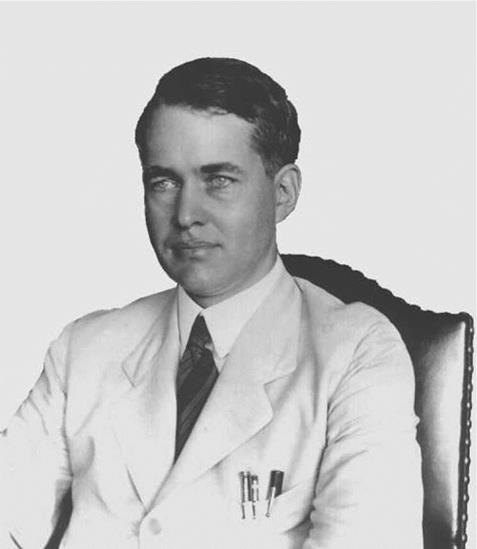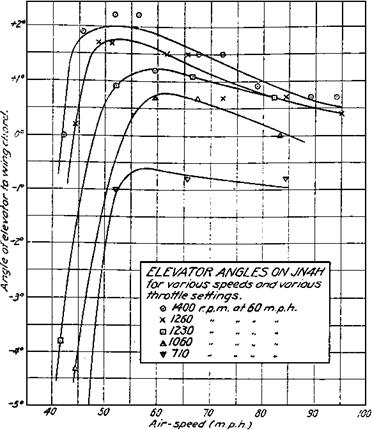Flying Qualities Become a Science
The stability and controllability of airplanes as they appear to a pilot are called flying or handling qualities. It was many years after airplanes first flew that individual flying qualities were identified and ranked as either desirable or unsatisfactory. Even more time passed before engineers had design methods connected with specific flying qualities. A detailed and fascinating account of the early work in this area is given in Chapter 3 of Stanford University Professor Walter G. Vincenti’s scholarly book What Engineers Know and How They Know It. We pick up the story in 1919, with the first important step in the process that made a science out of airplane flying qualities.
3.1 Warner, Norton, and Allen
Vincenti found that the first quantitative stability and control flight tests in the United States occurred in the summer of 1919. MIT Professor Edward P Warner (Figure 3.1), working part time at the NACA Langley Laboratory, together with two NACA employees, Frederick H. Norton and Edmund T Allen, made these tests using Curtiss JN-4H “Jennies” and a de Havilland DH-4. They made the most fundamental of all stability and control measurements: elevator angle (with respect to the fixed part of the tail, or stabilizer) and stick force required for equilibrium flight as a function of airspeed.
Warner and Norton made the key finding that the gradient of equilibrium elevator angle with respect to airspeed was in fact an index of static longitudinal stability, the tendency of an airplane to return to equilibrium angle of attack and airspeed when disturbed. The elevator angle-airspeed gradient thus could be correlated with the 1915-1916 MIT wind-tunnel measurements by Dr. Jerome C. Hunsaker of pitching moment versus angle of attack on the Curtiss JN-2, an airplane similar to the JN-4H. In the words of Warner and Norton (1920):
If an airplane which is flying with the control locked at a speed corresponding to the negatively sloped portion of the elevator position curve is struck by a gust which decreases its angle of attack, the angle will continue to decrease without limit. If the speed is low enough to lie on the positively sloping portion of the curve, the airplane will return to its original speed and angle of trim as soon as the effect of the gust has passed. A positive slope [of the elevator angle-airspeed gradient] therefore makes for longitudinal stability. (Italics added)
A strange aspect of the Warner and Norton JN-4H test results was the effect of airspeed on static longitudinal stability. The JN-4H was stable at airspeeds below about 55 miles per hour and unstable above that speed (Figure 3.2). One would be tempted to look for an aeroelastic cause for this, except that wind-tunnel tests of a presumably rigid model showed the same trend. The cause remains a mystery. The 1915-1916 MIT wind-tunnel tests were supplemented in 1918 by the U. S. Air Service at McCook Field with JN-2 wind-tunnel tests, in which the model had an adjustable elevator angle.
The McCook Field group was active in stability and control flight tests at the same period. As part of an armed service procurement activity, McCook’s primary interest was in airplane
|
Figure 3.1 Edward Pearson Warner (1894-1958). His DC-4E flying qualities requirements launched a new science. (From National Air and Space Museum) |
suitability for military use, rather than in aeronautical research. Thus, it is understandable that there were no measurements at the level of sophistication of the Norton and Allen tests at the NACA. Captain R. W. (Shorty) Schroeder was one of the Air Service’s top test pilots. His 1918 (classified Secret) report on the Packard-Le Pere LUSAC-11 fighter airplane’s handling qualities was completely qualitative.
In the course of the pioneering stability and control flight tests at the NACA Langley Laboratory, instrumentation engineers including Henry J. E. Reid, a future Engineer-inCharge at Langley, came up with specialized devices that could record airplane motions automatically, freeing pilots from having to jot down data while running stability and control flight tests. Langley Laboratory individual recording instruments developed in the 1920s measure control positions, linear accelerations, airspeed, and angular velocities.
|
Figure 3.2 Warner and Norton’s measurements of elevator angles required to trim as a function of airspeed and power for the Curtiss JN4H (Jenny) airplane. They correctly interpreted the data to show static longitudinal instability at airspeeds above the peaks of the curves. (From NACA Rept. 70, 1920) |
In each recording instrument, a galvanometer-type mirror on a torsion member reflects light onto a photographic film on a drum. A synchronizing device keys together the recordings of individual instruments, putting timing marks on each drum. Frederick Norton said in later years that the work at Langley in which he took the most pride was the development of these specialized flight recording instruments (Hansen, 1987).
The instrument developments put NACA far in front of other groups in the United States who were working on airplane stability and control. The photorecorder was typical technology at other groups running stability and control tests, such as the U. S. Army Air Corps Aircraft Laboratory at Wright Field. In the photorecorder, stability measurement transducers, ordinary flight instruments, and a stopwatch are mounted in a bulky closed box and photographed by a movie camera. Data are then plotted point by point by unfortunate technicians or engineers reading the film.
As another indication of NACA’s advanced flying qualities measurement technology, one of this book’s authors (Abzug) who served in the U. S. Navy during World War II remembers having to borrow a stick force measuring grip from NACA to run an aileron roll test on a North American SNJ trainer.
NACA flying qualities research in the 1920s and early 1930s also trained a group of test pilots, including Melvin N. Gough, William H. McAvoy, Edmund Allen, and Thomas
Carroll, in stability and control research techniques, including the ability to reach and hold equilibrium flight conditions with accuracy As with all good research test pilots, the NACA group worked closely with flight test engineers and in fact took part in discussing NACA’s flying qualities work with outsiders. All of this helped lay the groundwork for the comprehensive flying qualities research that followed.















